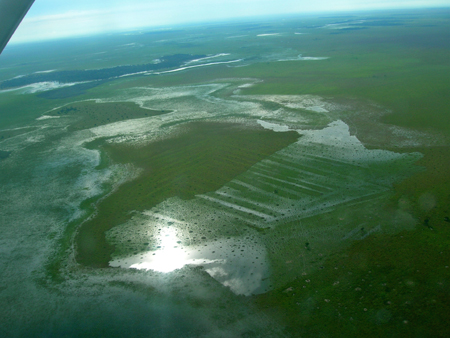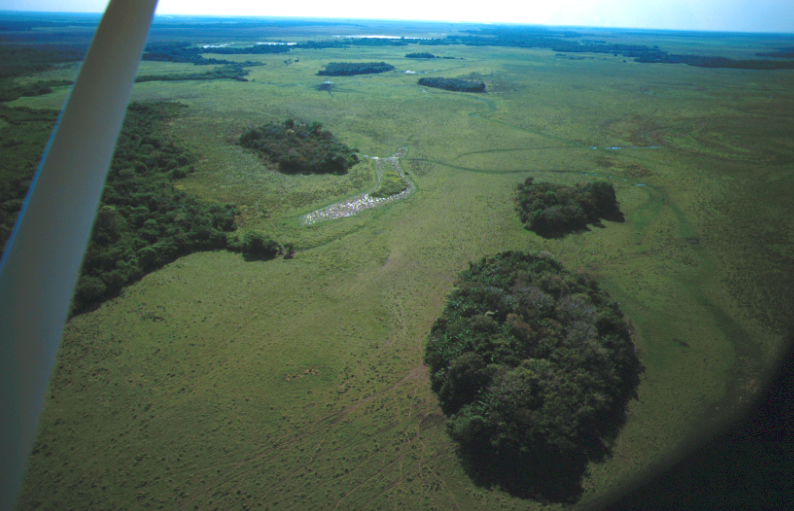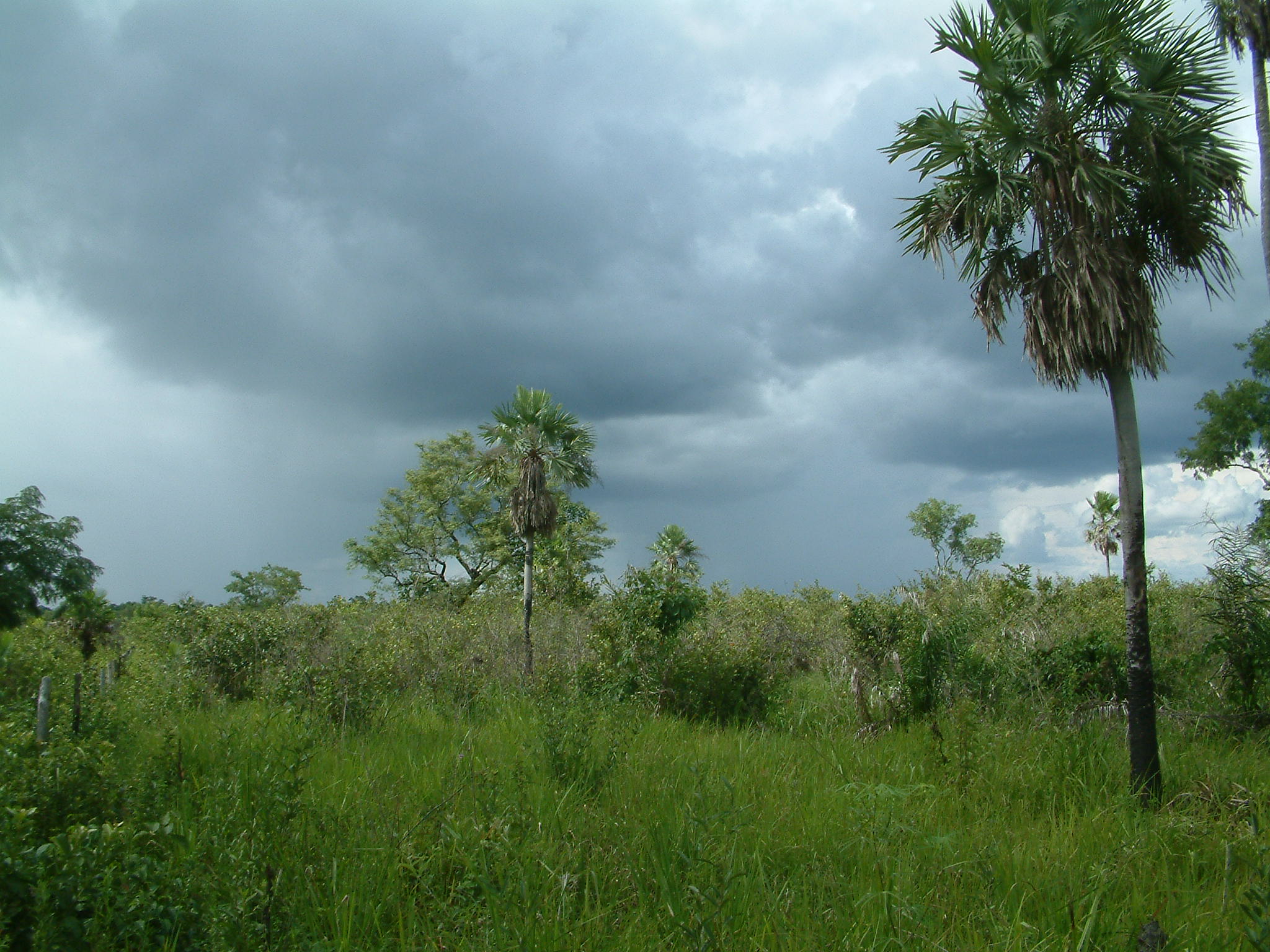Santa Rosa Beni Savannas
by Bennett Hennessey
 The Beni flooded savannas should far surpass the
popularity of the Pantanal of Brazil. Bolivia's savannas are phenomenal for
ease of observation and sheer bird abundances. The habitat holds around two
hundred species. The area is vast, but three main spots stand out as the best places to visit this habitat, 1) The Barba Azul Nature Reserve, which protects the Blue-throated Macaw population strong hold, 2) the Beni Savannas around Trinidad, and 3) the Santa Rosa Beni Savannas. Outside of the Barba Azul Nature Reserve, you will not see the Blue-throated Macaw unless specifically guided to a rare roosting site or nesting tree. The Beni flooded savannas should far surpass the
popularity of the Pantanal of Brazil. Bolivia's savannas are phenomenal for
ease of observation and sheer bird abundances. The habitat holds around two
hundred species. The area is vast, but three main spots stand out as the best places to visit this habitat, 1) The Barba Azul Nature Reserve, which protects the Blue-throated Macaw population strong hold, 2) the Beni Savannas around Trinidad, and 3) the Santa Rosa Beni Savannas. Outside of the Barba Azul Nature Reserve, you will not see the Blue-throated Macaw unless specifically guided to a rare roosting site or nesting tree.
The Santa
Rosa Beni Savanna offers an excellent alternative within easy access from Rurrenabaque to
bountiful savannas. The savannas have some of the highest bird abundances in
Bolivia. You will probably never see
another place with such a high bird biomass. My one day car trip from
Reyes to Santa Rosa ended with such ridiculous numbers as; 100 Cocoi Herons,
40 Plumbeous Ibis', 40 Southern Screamers, 45 Jabirus, 37 Snail Kites, 300 Limpkins
etc. The Savanna is most likely where your biggest birding day will be,
usually around 120 birds, and almost all the birds can be found in the small
Collin's Birds of Southern South America field guide (see birdwatching guide). The savanna is also a favorite area for
bird photographers with lots of tame big birds in go od light. But plan
accordingly because this habitat is high abundance/ low diversity, so though
day 1 will bring you hundreds of lifers, day four might not bring you any. od light. But plan
accordingly because this habitat is high abundance/ low diversity, so though
day 1 will bring you hundreds of lifers, day four might not bring you any.
Savanna birding begins along the road to Santa
Rosa just a few Km outside of the town of Reyes.
The road is very quiet with little traffic, but also few places to
stop for cold drinks until you get to the town of Santa Rosa,
67 Km from Reyes. The road passes large and small marsh
areas, dry savannas, wet savannas and gallery forest. In the open areas pick up your Herons,
Ibises, Screamers, Ducks, Storks and Hawks but don't neglect the forest
patches and river edge forest for savannas adapted Ovenbirds, Antbirds and
Flycatchers like Chotoy Spinetail, Rufous Cacholote, Great Antshrike, Mato
Grosso Antbird, White-crested Tyrannulet, and White, White-ru mped
and Grey Monjita. And keep an eye out
for the Bolivian savannas subspecies of the Plain Softtail and Velvet-fronted
Grackle, both being under scientific investigation as to their full endemic
species status. We recommend that you
think like the birds looking at the many variable habitats and microhabitats
within the general name "savannas".
Try to spend sometime in each of these habitat types: wet marsh, dry
marsh, open small lake, river, river edge forest, open forest, forest Island,
large forest, thick road edge scrub, dry grassland, wet grassland and even
the towns of Santa Rosa and Reyes are habitat types. By birding and driving your way to Santa Rosa, spending one or two nights in Santa Rosa, and then
birding and driving the return trip. mped
and Grey Monjita. And keep an eye out
for the Bolivian savannas subspecies of the Plain Softtail and Velvet-fronted
Grackle, both being under scientific investigation as to their full endemic
species status. We recommend that you
think like the birds looking at the many variable habitats and microhabitats
within the general name "savannas".
Try to spend sometime in each of these habitat types: wet marsh, dry
marsh, open small lake, river, river edge forest, open forest, forest Island,
large forest, thick road edge scrub, dry grassland, wet grassland and even
the towns of Santa Rosa and Reyes are habitat types. By birding and driving your way to Santa Rosa, spending one or two nights in Santa Rosa, and then
birding and driving the return trip.
Logistics: Rurrenabaque is not your large city, or
developed town like in other parts. It still has a very rough tropical feel
and will be a bit more complicated. There is no rent a car company. For short
trips, you can rent a motorbike. Just ask the motortaxi men for a rental- the
price last year was 15 Bolivianos an hour. There are 4x4 that can be rented with the driver. You can negotiate a price for a trip from Rurrenabaque to Santa Rosa for a number of days. The driver will always be with the vehicle. We recommend asking the
hotel for a recommended driver- someone they know. It costs around 100 USD a day. One possibility is to rent
a taxi with a driver or a motorbike in Rurrenabaque. Another option would be to ask a reputable
tourism agency for a vehicle and driver for a trip. A very nice trip would be
to spend the day driving and stopping the
67 Km between Reyes and
Santa Rosa, pass two nights in Santa Rosa birding further up the road to the
large lake on day two, and spending the third day backtracking the adventure
to Rurrenabaque. Beware though, a
rainy day may force the road to be closed for up to several hours. The entire road is good birding and we
recommend you make many stops, and keep in mind habitat types mentioned
above.
Another option would be to tag along on a tour run by a tour
operator in Rurrenabaque. These
agencies usually sell a trip along the Yacuma river, where tourists can see
Pink River Dolphin, Capybara, Caiman and large congregations of river edge
birds like Egrets. For the birder,
such a trip is not nearly as productive as a walk along the road anywhere
between Reyes and Santa Rosa. But if you have a group, many of these eco-tourism
agencies are quiet flexible and could custom design a birding tour to include
various stops along the road.
BIRD LIST
|

